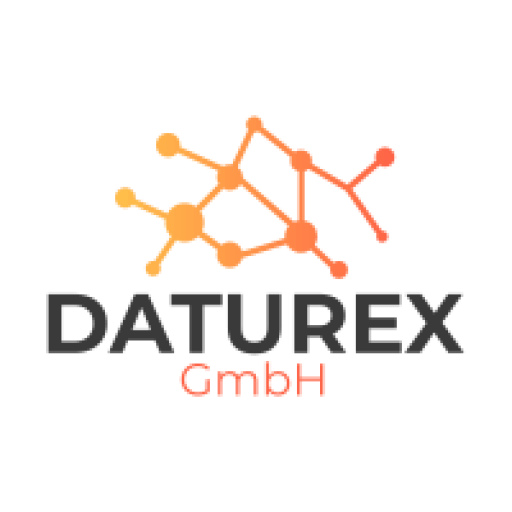In today's dynamic business world Communication platforms have become indispensable. They represent the nerve center for modern companiesby overcoming the boundaries of time and space and Team collaboration and internal messaging seamlessly with each other. With a multitude of integrated functions, such platforms not only reduce misunderstandings and promote accuracy in the exchange of information, but also significantly increase the efficiency of the communication process. Business communication and thus ultimately competitiveness on the market.
Whether it's about improving the workflow through agile Project management or to provide a platform for easy and quick access to relevant information - to optimize Communication platforms are the key tools in the hands of teams that want to generate success. The feedback from users on rating portals such as OMR Reviews, for example, which confirms the popularity and effectiveness of solutions such as Miro, Slack and Microsoft Teams, points the way forward in this respect.
Key findings
- Seamless Team collaboration and internal messaging are for modern companies fundamental.
- Communication platforms enable a flowing Business communication without time and space barriers.
- The use of platforms such as Miro, Slack and Microsoft Teams increases efficiency and productivity in the company. The company.
- Proven tools were highlighted by user ratings on OMR Reviews and show the high value of these technologies.
- Agile Project management and centralized information storage are two major advantages of Communication platforms.
The importance of communication platforms for modern companies
Digital communication today determines the rhythm in which modern companies move. It is the foundation on which social networks and Online communication both consolidate and challenge the company's internal structures. Communicative efficiency and the successful exchange of information via digital media are therefore crucial pillars in the DNA of any competitive company.
Easy collaboration across different time zones and locations
With the globalization of business, the ability to operate across time zones and geographical boundaries is not only desirable, but essential. Communication platforms such as Slack, Microsoft Teams and Google Workspace create the conditions for flexible and seamless collaboration, regardless of the location of the team members. This enables globally active The companyto operate effectively and synchronously.
Transparency and efficiency in the internal flow of information
The Information flow within a company can often be complex and slow. Nevertheless, digital Communication platforms The transparency and speed with which information can be shared through features such as instant notifications and integrated search functions. This not only increases efficiency, but also reduces wrong decisions that could result from a lack of communication.
Central role of digital communication in the world of work
The digital communication plays a central role in today's working world. It is the anchor point that makes it possible, social networks and to promote and maintain internal company communities. This creates dynamic teams that share knowledge across divisions and thus improve the entire organization. The company advance.
A direct comparison of popular communication platforms
Choosing the right Communication platforms is crucial for the success of digital communication and Team collaboration in modern The company. However, with an abundance of options, the decision can be challenging. Slack, Microsoft Teams, Google Workspace and Confluence offer different focuses and functionalities that are tailored to the individual needs of companies.
Slackthe pioneer in terms of Instant messagingstructures communication by introducing channels that make it possible to keep projects and topics organized and clear. Microsoft Teams aims to provide not only internal teams, but also external partners with a platform for Comprehensive collaboration to offer. With its extended integration options, it combines chat, video conferencing and shared document editing under one roof.
Google Workspace creates an integrated environment that provides productivity tools for seamless Online collaboration offers, while Confluence has made a name for itself as a powerful central source of information that promotes discussion and document management within companies. The following table provides an overview of the core functions and cost models of the most popular Communication platforms:
| Platform | Core functions | Pricing model |
|---|---|---|
| Slack | Channels, file sharing, integrations, audio/video calls | Freemium; fee-based packages from €6.25/month |
| Microsoft Teams | Chat, Online meetings, Telephony, Collaboration | Free version; Essentials from € 3.40/month |
| Google Workspace | Gmail, Docs, Sheets, Meet, Drive | Business Starter from € 4.68/month |
| Confluence | Wikis, document management, project collaboration | Free for up to 10 users; standard from $5.50/month |
The decision for a platform should not only be based on costs, but should also take into account the specific requirements for functionality and scalability. Ultimately, careful selection contributes to a more effective digital communication and stronger Team collaboration with.
Introduction to the top communication platforms for teamwork
The progressive Digitization has the Online communication and platforms such as Miro, Slack and Microsoft Teams have become essential tools for the Team collaboration made. These tools not only make Online meetings and Web conferencesbut also make a significant contribution to increasing efficiency and promoting agile working methods.
Ranking and ratings of Miro, Slack and Microsoft Teams
A ranking based on user experiences from OMR Reviews highlights the strengths and weaknesses of the popular collaboration tools. Miro stands out with its versatility, Slack scores with its intuitive operation and Microsoft Teams impresses with its seamless Integration into the Microsoft ecosystem. These platforms are particularly valued for their ability to bring teams together and ensure a smooth exchange of information.
Functionalities and application examples of collaboration tools
The range of functions offered by modern collaboration tools is impressive: from interactive whiteboards and file sharing to complex Project management-functions. Miro, for example, makes it possible to work creatively via interactive boards, while Slack offers fast communication channels through chats and integrated call functions. Microsoft Teams rounds off the spectrum by offering comprehensive options for Online meetings and Web conferences and thus helps companies to work effectively even over long distances.
In addition to improving the Team collaboration These tools also ensure that all project participants are always kept up to date and thus contribute to an optimized project management. Online communication with.
Internal messaging systems: efficient communication tool for teams
In today's fast-paced world internal messaging systems are crucial for maintaining communication in companies. These systems, such as Slack and Microsoft Teams, are no longer just simple chat applications, but have become comprehensive solutions for Instant messaging, agile working methods and Team collaboration have become. They not only enable a rapid exchange of information, but also promote networking between team members and collaboration on projects.
The implementation of internal messaging systems in the company structure makes a significant contribution to increasing productivity and efficiency. Group chats and the possibility of audio and video communication allow teams to discuss flexibly and without delay, which is particularly beneficial for employees working from home or in different time zones.
These tools support agile working methodsby using iterative processes and the Enable rapid adaptation to new requirements and situations. A fast flow of information and a central platform for the exchange of important documents and resources are essential.
"Internal messaging systems are the backbone of the digitized world. Team collaboration and enable companies to be more agile and responsive to market changes."
- Real-time communication through Instant messaging
- Increased transparency and information flow
- Promoting cooperation and team spirit
- Integration into existing workflow systems
- Support for mobile working methods
To summarize internal messaging systems everything that modern teams need for effective communication and collaboration. With their help, companies can optimize their internal communication processes, work more agilely and ultimately survive in the market.
Pricing models and cost efficiency of team collaboration software
The world of Collaboration software is as dynamic as it is diverse. It offers a range of Price modelsthat are tailored to the most diverse needs of users. It is crucial to compare the options carefully in order to find the Cost efficiency for the respective company. Of course, it is not only the range of functions that plays a role, but also the added value that the respective solution provides for the company. Business communication and ultimately for the Corporate success offers.
Free vs. paid features in platforms like Slack and Google Workspace
Free versions of platforms such as Slack and Google Workspace already offer a basic set of features that can effectively support small teams. However, if more specific requirements such as extended file sharing, larger cloud storage or individual customizations need to be met, the Paid subscriptions come into play. These not only offer more advanced features, but often also better adaptation to company structures and support options.
Comparison of individual and team subscriptions to the tools
Companies are often faced with the question of whether to opt for Individual or team subscriptions should decide. It is important to consider the advantages and disadvantages of these Price models and decide which solution is the right one for you. Cost efficiency maximized - without compromising the functionality of the Collaboration software to enter into.
| Platform | Free functions | Paid functions (example) |
|---|---|---|
| Slack | Access to the last 10,000 messages, 10 integrations, individual conversations | Unlimited message history, unlimited integrations, group calls, advanced identity management |
| Google Workspace | Gmail, Docs, Sheets, Slides, 15 GB drive storage | Extended cloud storage, corporate email, enterprise security features |
| Microsoft Teams | Chat, file sharing, Online meetings with up to 300 participants | Additional memory, meeting recordings, advanced security options |
| Confluence | Unlimited number of pages and spaces | Extended authorizations, analysis functions, premium support |
The effectiveness of the Business communication is achieved through the intelligent selection of suitable Collaboration software and their Price models significantly influenced. Companies should not only pay attention to the pure costs, but above all to the price/performance ratio and the added value for the company. Only in this way can a sustainable Cost efficiency be guaranteed.
Integration and compatibility in the digital working environment
The digital transformation presents companies with the challenge of seamlessly linking different systems and applications. The core concepts Integration and Compatibility play a decisive role here. They make it possible to Digital working environment and efficiently integrate applications such as Miro or Google Workspace into the existing IT landscape.

API interfaces and connection to existing company systems
Open API interfaces offer the key to Integration more modern Communication platforms into existing company systems. They allow software developers to seamlessly connect their own applications and services and smoothly exchange data between different systems. Platforms such as Miro and Google Workspace in particular are characterized by their extensive API options, which enable effective integration with ERP, CRM and other company systems.
Versatility through plug-ins and extensions
The flexibility of communication tools is significantly influenced by the availability of various Plug-ins and extensions determined. Whether additional functions for project management or extensions for special applications - such add-ons make it possible to adapt the platforms individually to the requirements and processes of a company. This makes the Compatibility with the digital working environment and user-specific needs can be met efficiently.
Communication platforms promote agile working methods
The landscape of the world of work has changed due to the agile working methods has changed fundamentally. Flexibility and speed of response are the keys to success today, and Communication platforms play an essential role in this. Tools such as Slack and Microsoft Teams are not just simple chat applications, but powerful supporters of a lively and agile corporate culture.
Agility means working in short cycles, iterating quickly and continuously incorporating feedback. This is exactly where Digitization and Communication platforms on. They make it possible to Integrate functions and thus create a central hub for Teamwork and exchange of information.
With a wide range of tools that promote collaboration, such platforms support companies in adopting an agile way of working and implementing it effectively in their day-to-day business. The resulting increased efficiency and flexibility are considerable advantages that have a positive impact on competitiveness.
"Constant change is a characteristic of our time and requires adaptation and constant further development of working methods. Communication platforms are the driving force behind this. agile working methods with life and makes it realistically implementable."
- Adaptability to changing market dynamics
- Faster response to customer needs
- Better networking within the teams
- Transparent flow of information thanks to Digitization
The introduction of communication platforms can therefore be seen as an important step towards a sustainable corporate structure in which the Digital transformation and paved the way for innovation-driven Teamwork is leveled.
The role of instant messaging and online meetings in communication platforms
In times in which agility and speed are decisive for market success, the Instant messaging and Online meetings It is impossible to imagine life without them. Communication platforms such as Slack and Microsoft Teams have established themselves as essential tools for efficient and targeted corporate communication. They strengthen the foundation of modern working environments and support the continuous Decision making in teams across all hierarchical levels.
Direct communication and decision-making via chat tools
The speed with which information and decisions can be shared is particularly important in hectic business times. Instant messaging enables users to communicate in real time and exchange information with virtually no delay. This allows decisions to be coordinated efficiently at short notice and quick answers to urgent questions to be found.
Web conferencing and video conferencing as an alternative to physical meetings
Online meetings and Web conferences offer a practical and cost-effective alternative to traditional, physical meetings. They are a central part of the remote working culture and have proven to be essential for maintaining business continuity. Not only are travel costs and time spent reduced, but project progress can be consistently monitored and managed while keeping teams connected across continents.
In fact, the shift from face-to-face meetings to virtual spaces has numerous advantages that have a positive impact on the Decision making and the flexibility of collaboration. This also significantly expands the range of corporate communication and adapts it to the needs of a digitally networked workforce.
Customizability and user-friendliness of collaboration tools
Innovative Collaboration tools have become a key factor for team success and company growth in the digital working world. The Customizability and User friendliness of these tools make a significant contribution to promoting efficient and motivating collaboration.

Drag-and-drop technologies and customizable interfaces
The Drag-and-drop technology is a prime example of intuitive operating concepts in modern collaboration platforms. By simply moving elements around, users can structure complex projects and workflows without in-depth technical knowledge. This ensures that the tools can be quickly learned and effectively used by different team members.
Monday.com as an example of individualization and scalability
As a pioneering representative of platforms based on Customizability and scalability, stands out from the crowd. monday.com in particular. This tool makes it possible to customize the user interface and thus create a tailor-made solution that adapts to the growth and changing requirements of a company.
- Customize templates with drag-and-drop
- Individual workspaces for different teams
- Compatible integrations for seamless workflows
- Scaling according to the size of the company
With these features, monday.com is not only a tool for optimizing the Team collaborationbut also a testimony to the importance of a user-friendly design of Collaboration tools.
Communication platforms and their importance for marketing
At a time when Marketing communication is increasingly reliant on speed and flexibility, the Communication platforms an essential role for Marketing teams. They not only allow efficient Project managementbut are also a catalyst for creativity and collaboration within the team. The focus here is on tools for content review and workflow management, which enable effective project coordination.
With functions such as instant messaging, video conferencing and a wide range of other integration options, they provide the ideal basis for agile marketing strategies. The seamless connection of team-internal communication and project structure is crucial for achieving corporate goals, especially in complex marketing projects.
It should be borne in mind that each communication platform has its own specific range of functions, which either qualifies it as an ideal tool for certain marketing tasks or not. The following comparison provides an insight into which tools fulfill certain aspects of the Marketing communication can provide particularly good support.
| Communication platform | Special features | Suitability for marketing teams |
|---|---|---|
| Slack | Channel-based communication, integration of third-party apps | Networked team communication, real-time information exchange |
| Asana | Project management, deadlines, team assignments | Target management for marketing projects, tracking of workflows |
| Trello | Kanban boards, user-defined lists | Visual project overview, easy prioritization of tasks |
| Microsoft Teams | Direct integration with Office products, video conferencing | Interdisciplinary Teamwork, Document management |
These tools support Marketing teams The platform not only helps companies to better structure their marketing projects in terms of time, but also to effectively bring those involved on board across departments. From the initial idea to development, implementation and analysis, all project phases can be brought together on one platform.
Finally, these communication platforms are also living testimony to how modern Marketing communication can look like: fast, adaptive and always one step ahead. This is how the digital transformation The new marketing industry is within reach and the way is paved for innovative marketing strategies.
Knowledge management and central data storage: more than just communication
In a world where data is considered the new oil, it is essential for companies to manage their knowledge effectively and make it centrally accessible. Communication platforms are no longer just for exchanging news, but have developed into valuable knowledge management tools. With the help of Knowledge base software essential information can be structured, shared and preserved, which is an invaluable advantage in the fight against the Loss of information represents.
Knowledge base software as a key resource for companies
Knowledge base software is at the heart of any effective knowledge management system. These platforms make it possible not only to collect documented specialist knowledge, but also to prepare it in such a way that it is accessible and comprehensible for all team members. This promotes a knowledge-based corporate culture and supports employees in familiarizing themselves quickly and independently with new subject areas.
Avoidance of information loss through centralized platforms
Loss of information can be devastating in a dynamic working environment. Through Central data storage can effectively avoid such losses. They serve as a single point where information can be stored, updated and retrieved. This ensures that valuable knowledge remains within the company, even if employees leave the company or are involved in different projects.
The implementation of such a central source of information requires careful planning and software that adapts flexibly to the needs of the company. The following table helps to take a look at the various aspects of such a system:
| Aspect | Advantage | Example |
|---|---|---|
| Accessibility | Fast and uncomplicated access to information | Intuitive search functions |
| Scalability | Grows with the scope of corporate knowledge | Cloud-based storage |
| Security | Protection against unauthorized access and data loss | Encrypted data transmission |
| Collaboration | Enables the joint processing of knowledge content | Editing and commenting functions |
Through the strategic use of Knowledge base software as Central data storage companies can Knowledge management effectively into their business processes and thus pave the way for a future-proof organization.
Conclusion
The era of digital transformation has Communication platforms have become an indispensable part of day-to-day business. They form the heart of efficient Team collaborationby breaking down communication barriers and driving joint success through transparency and speed. Managed by intuitive interfaces, they promote a dynamic that agile working methods not only supports, but makes it the new standard in collaboration.
In view of the constantly changing requirements in the business world, it is the adaptability of platforms such as Slack, Microsoft Teams and monday.com that makes modern companies in the competition for market share and innovative strength. By integrating these technologies, the digital transformation from a challenge to a supporting pillar of the Corporate success.
There is no question that choosing the right communication platforms is crucial. They must not only meet the needs of internal communication, but also harmonize with other systems and be able to grow with the company. In this way, they translate the vision of a networked and adaptive way of working into reality and enable teams to work hand in hand, even across borders - for a Corporate successthat endures.
FAQ
What are the main advantages of communication platforms for companies?
Communication platforms make it easy for teams to collaborate across different locations and time zones, increase transparency and efficiency in the flow of information, promote agile working methods and support the digital transformation of companies.
What functions do modern communication platforms offer?
Modern communication platforms offer a wide range of functions, including Instant messagingonline meetings, Web conferencesfile sharing, collaborative editing of documents, integration with other systems or applications and customized personalization settings.
Which communication platforms are particularly popular with modern companies?
Popular communication platforms at modern companies include Slack, Microsoft Teams, Google Workspace, Miro and monday.com, all of which offer different functions for effective communication. Team collaboration and internal communication.
How do communication platforms promote agile working methods?
Communication platforms support the agile methodology by enabling a flexible response to change, offering real-time communication and providing tools that support rapid iteration and efficient collaboration in projects.
What types of pricing models exist for communication platforms?
There are different types of communication platforms Price modelsincluding free basic versions, as well as paid subscriptions with extended functions and services. Companies can choose between individual and team subscriptions, depending on their requirements and budget.
How important are integration and compatibility when choosing a communication platform?
Integration and Compatibility are very important, as they ensure that the chosen communication platform is seamlessly integrated into the existing Digital working environment can be integrated and the user experience is not impaired. Open API interfaces and plug-in options are essential here.
To what extent do communication platforms support knowledge management in companies?
Communication platforms serve as central points of contact for Knowledge management, allow best practices to be shared and secure specialist knowledge in the long term. Knowledge base software as part of these platforms facilitates the transfer of knowledge and protects against loss of information.
What do marketing teams need to consider when using communication platforms?
Marketing teams should look for specific features that support content review, proofing and marketing project management. The platform should enable creative and marketing tasks to be coordinated efficiently, with an emphasis on Instant messaging and visual collaboration.


Recent Comments